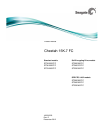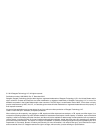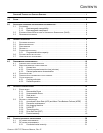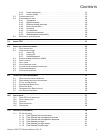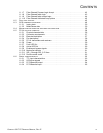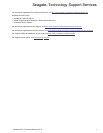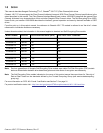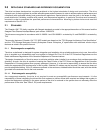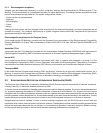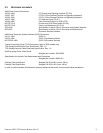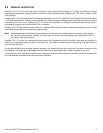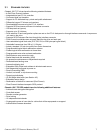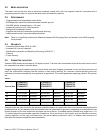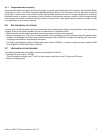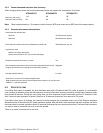CHEETAH 15K.7 FC PRODUCT MANUAL, REV. E 4
2.1.2 Electromagnetic compliance
Seagate uses an independent laboratory to confirm compliance with the directives/standards for CE Marking and C-Tick
Marking. The drive was tested in a representative system for typical applications. The selected system represents the most
popular characteristics for test platforms. The system configurations include:
• Typical current use microprocessor
• Keyboard
• Monitor/display
• Printer
• Mouse
Although the test system with this Seagate model complies with the directives/standards, we cannot guarantee that all
systems will comply. The computer manufacturer or system integrator shall confirm EMC compliance and provide the
appropriate marking for their product.
Electromagnetic compliance for the European Union
If this model has the CE Marking it complies with the European Union requirements of the Electromagnetic Compatibility
Directive 89/336/EEC of 03 May 1989 as amended by Directive 92/31/EEC of 28 April 1992 and Directive 93/68/EEC of 22
July 1993.
Australian C-Tick
If this model has the C-Tick Marking it complies with the Australia/New Zealand Standard AS/NZS3548 1995 and meets the
Electromagnetic Compatibility (EMC) Framework requirements of Australia’s Spectrum Management Agency (SMA).
Korean KCC
If this model has the Korean Communications Commission (KCC) logo, it complies with paragraph 1 of Article 11 of the
Electromagnetic Compatibility (EMC) Control Regulation and meets the Electromagnetic Compatibility Framework
requirements of the Radio Research Laboratory (RRL) Ministry of Information and Communication Republic of Korea.
Taiwanese BSMI
If this model has two Chinese words meaning “EMC certification” followed by an eight digit identification number, as a
Marking, it complies with Chinese National Standard (CNS) 13438 and meets the Electromagnetic Compatibility (EMC)
Framework requirements of the Taiwanese Bureau of Standards, Metrology, and Inspection (BSMI).
2.2 EUROPEAN UNION RESTRICTION OF HAZARDOUS SUBSTANCES (ROHS)
The European Union Restriction of Hazardous Substances (RoHS) Directive restricts the presence of chemical substances,
including Lead (Pb), in electronic products effective July 2006.
A number of parts and materials in Seagate products are procured from external suppliers. We rely on the representations of
our suppliers regarding the presence of RoHS substances in these parts and materials. Our supplier contracts require
compliance with our chemical substance restrictions, and our suppliers document their compliance with our requirements by
providing material content declarations for all parts and materials for the disk drives documented in this publication. Current
supplier declarations include disclosure of the inclusion of any RoHS-regulated substance in such parts or materials.
Seagate also has internal systems in place to ensure ongoing compliance with the RoHS Directive and all laws and
regulations which restrict chemical content in electronic products. These systems include standard operating procedures that
ensure that restricted substances are not utilized in our manufacturing operations, laboratory analytical validation testing,
and an internal auditing process to ensure that all standard operating procedures are complied with.



